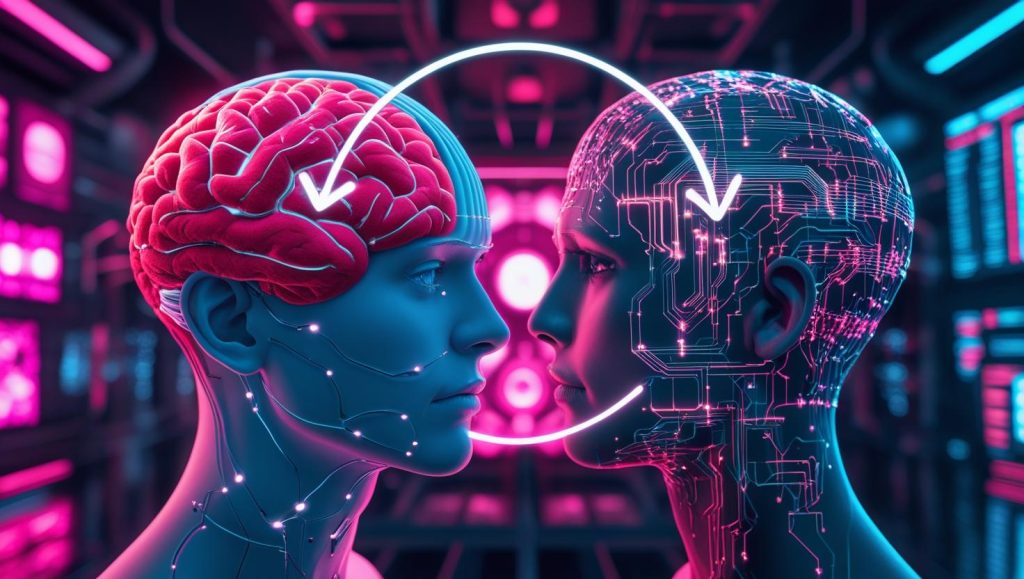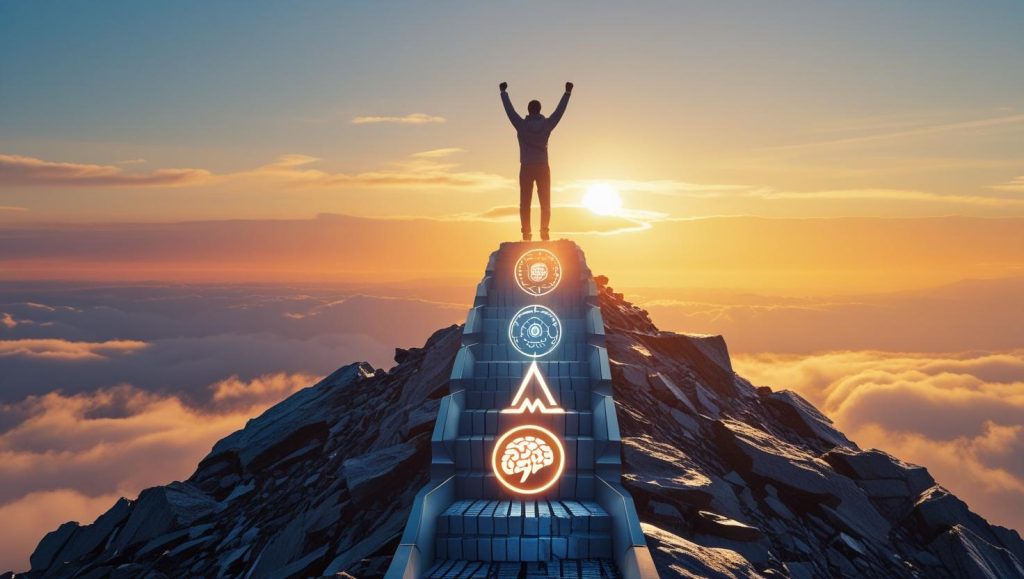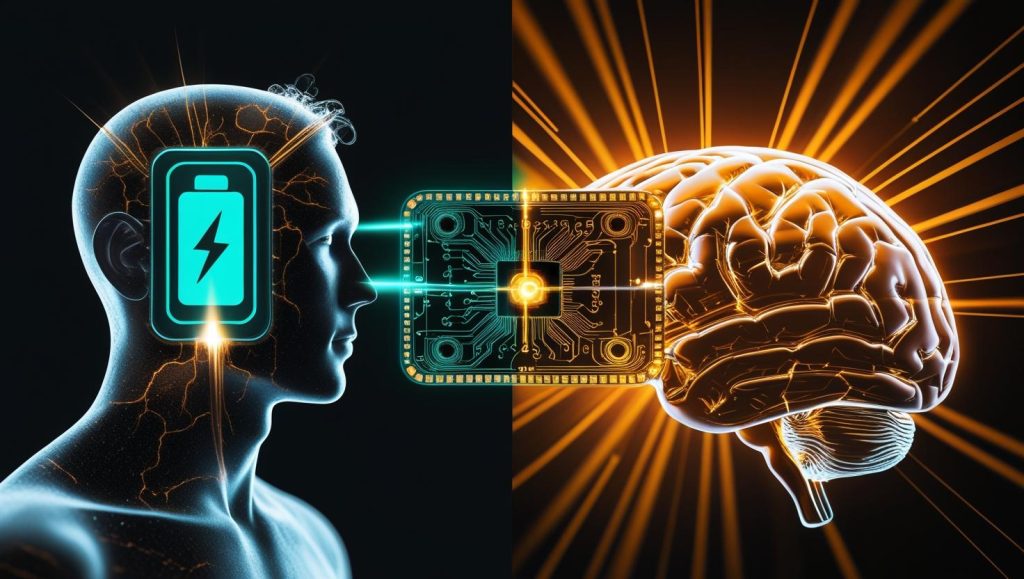You’re disciplined: you meditate, plan deep work, and track habits. Yet in spite of all that, your mind still feels foggy by mid-afternoon; sleep is restless; focus doesn’t stick. That’s because mental performance isn’t just behavioral—it’s biological. And until you tune your biology, the system leaks.
Biohacking—once the domain of elite athletes—is now accessible to knowledge workers thanks to AI-powered feedback loops. These tools don’t guess when to rest—they sense it. They don’t assume recovery—they measure it. And they adapt as your body changes, helping you build cognitive clarity that lasts.
This article shows how tools like Eight Sleep, WHOOP, and BioLite form adaptive feedback loops that track your biology, analyze patterns, suggest adjustments, and reinforce new routines. It’s not fringe optimization. It’s biological alignment for sustained high performance—practical, adaptive, and scalable.
Why most productivity hacks fall short
We’ve all tried time-blocking, focus apps, or morning routines. But they treat your brain as a constant. In reality, you operate on circadian rhythms, hormonal cycles, environmental cues. Ignoring these makes focus fragile and recovery slow.
Dr. Molly Maloof, a longevity physician, explains: “Mental fatigue isn’t just mental—it’s systemic. Most tools miss early signals—sleep debt, low HRV, metabolic mismatch.” Those invisible cracks in your brain’s architecture eventually lead to burnout—not because you’re lazy, but because your system hasn’t adapted.
Enter AI feedback loops: they sense your biological state, analyze trends, prompt adaptive behaviors, then refine interventions based on your response. It becomes progression, not guesswork.
Tool spotlight #1: Eight Sleep – training your night like a program
Eight Sleep transforms your bed into a bio-responsive neural recovery system:
- Monitors sleep cycles, HRV, and heart rate to know when you’re in light, deep or REM sleep.
- Adjusts bed temperature in real time—cooler when deep sleep begins, warmer before waking.
- Detects disruptions (e.g., restlessness, wake-ups) and recommends behavioral interventions.
Sleep science shows even a few degrees of cooling can boost slow-wave sleep by 20–25%, deepening rest and supporting memory consolidation. HRV improvements correlate with reduced stress and sharper decision-making.
“Before Eight Sleep I tracked sleep manually. Now I train it using data feedback,” says growth marketer Jordan Hughes. The shift from tracking sleep to optimizing it builds cognitive consistency across the week.
This pairing works beautifully with tools like Motion, which protects deep-work blocks based on sleep-informed energy levels, or RescueTime, which nudges you when morning lapses start appearing.
Tool spotlight #2: WHOOP – reading stress so you know when to ease it
WHOOP offers daily biometric insights through metrics like strain, HRV, sleep debt, and restability—all synthesized into recovery scores:
- Score turns data into feedback—telling you when to push and when to rest.
- Strain shows cardiovascular load from exercise and mental stress.
- Lifestyle factors—screen time, caffeine, alcohol—influence recovery scores.
A startup CEO, Laura Gill, shares: “I used to schedule workouts by habit. Now I schedule them based on my recovery score for the day.” Over time, patterns emerge: which workouts feel best when you’ve had 6 hours of sleep versus 8, or when brain fog requires an active break.
When combined with sleep trackers and focus tools, WHOOP helps your day adapt to your level of readiness—not your ambition.
Tool spotlight #3: BioLite – subtle environmental optimization for mental sharpness
BioLite uses ambient sensors to monitor screen glare, blue-light exposure, posture, and ambient disruption. Rather than interrupting focus, it nudges improvements through environmental feedback:
- Warns about blue-light overuse in the afternoon
- Suggests sunlit breaks during energy dips
- Tracks posture slumps over time and prompts neuro-stretch breaks
- Analyzes room noise and lighting to optimize cognitive readiness
Research shows working under blue light above 500 lux in the evening disrupts melatonin and sleep, while poor posture and low ambient light contribute to mental fatigue. BioLite’s ambient nudges prevent deterioration before it shows up in your work.
“BioLite feels like a silent lab running under my desk. I don’t notice it—my mind just feels clearer,” says author Max Charlesworth.
How AI feedback loops operationalize clarity
These tools operate as four-phase feedback loops:
- Sense: Gather physiological or environmental data in real time.
- Analyze: AI detects trends and anomalies—strain spikes, poor sleep, light overload.
- Adjust: Suggest or automatically enact changes—cooler bed, posture breaks, reduced screen time.
- Reinforce: Track your behavior change and refine the signal for next time.
Over time, these feedback loops become predictive: they anticipate downturns and recommend countermeasures—nights to recover, days to plan focus, or breaks when your graph dips.
Why this benefits knowledge workers specifically
Knowledge work demands sustained mental presence. Cognitive fatigue shows up as weak decisions, forgotten ideas, or slowed thinking—not just sleepiness. The smallest bio-optimization (better sleep, less strain, improved posture) compounds:
- Sharper mental clarity and faster decision-making.
- Reduced afternoon crashes and evening anxiety.
- Higher resilience to stress, transitions, or unscheduled change.
And when combined with supporting tools like Rize, which reveals time-use patterns, or Memo AI, which reinforces learning habits, you gain clarity across behavior, cognition, and biology.
Real-world impact over time
Consider health coach Priya Rana. She integrated WHOOP and BioLite into her routine. She discovered chronic midday slumps correlated to nightly HRV drops and poor lighting during afternoon work. By adjusting breaks, screen color temperatures, and workout timing, her mental load dropped 15% and creative output rose faster.
Or entrepreneur Lucas Trent, who used Eight Sleep to correct his chronically suppressed HRV. After 3 weeks, he reported fewer late-afternoon distractions and improved multi-hour focus windows.
These are not fringe cases. These are everyday professionals now steering their biology, not reacting to it.
Key risks and how to mitigate them
- Data overload: Start with one tool and one metric to avoid overwhelm.
- Privacy: Understand data policies—what is being stored and shared.
- Over-optimization: Build agency back into your routine. Feedback is guidance, not a mandate.
Dr. B.J. Fogg warns: “Metrics help when they serve meaning—not undermine it.” Always film the tool. Don’t let it film you.
Your body is your brain’s operating system
Focus without recovery is unsustainable. Habit without sleep alignment is fragile. Environment without ergonomic attention leads to burnout. Tools like Eight Sleep, WHOOP, and BioLite don’t replace intuition—they inform it.
By linking cognitive behavior tools (Fabulous, Rize, Memo AI) and focus systems (brain‑adaptive apps), you create a full-stack system: from awareness to behavior to biology.
Final thoughts: cognitive resilience as infrastructure
Cognitive performance isn’t built in bursts—it’s built in biological alignment. Each feedback loop helps you perform at your baseline—consistently, clearly, sustainably.
This isn’t futurism. It’s functional. It’s biohacking upgraded for knowledge work. It’s behavior that flexes with biology. It’s recovery integrated into your workflow—not an optional extra.
As we wrap up our pillar on peak mental performance, remember: disruptors don’t win by force. They win by flow—when biology, behavior, and technology align.



